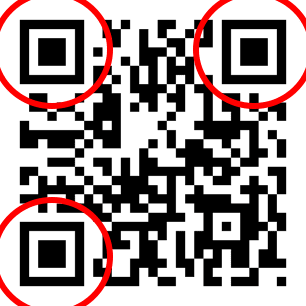Quick, easy, and convenient – that’s what QR codes are all about! This two-dimensional barcode has become a marketing staple in recent years, providing access to information with just a scan of a mobile device’s camera. Here are some facts to get you buzzing:
It’s safe to say that QR codes have revolutionized how we share information. Their versatility and easy-to-use nature have made them an indispensable tool in the digital age.
Explaining the Acronym: QR Code
QR Code is an acronym for “Quick Response Code”. Its name bears a distinct association with its purpose, as it allows for faster data transfer and processing. Simply put, QR code is a two-dimensional barcode that allows users to access data when scanned by a QR code scanner.
Unlike traditional barcodes that display data in a single direction, QR codes can display data vertically and horizontally. This feature allows QR codes to contain more information than standard barcodes. QR codes have a wide range of applications and have grown increasingly popular throughout the years.
The Origin of QR Code
QR code was invented by Denso Wave, a subsidiary of Toyota, in 1994. Initially, QR codes were used to track vehicle parts during manufacturing processes. However, their use expanded beyond that, and they became a favored tool among marketers, advertisers, and educators.
The first version of QR codes used a black and white grid, but newer versions now offer additional colors and gradients. However, the basic principle remains the same: QR codes can store a significant amount of data that can be accessed quickly and easily.
Decoding the QR Code Meaning
QR code has a rich history, and understanding its meaning requires an in-depth look at its architecture. The code is composed of squares arranged in a grid-like pattern. It can store various forms of data such as text, images, hyperlinks, and other more complex types. With a quick scan of the code, the data can be quickly and easily transferred to a viewer’s device.
The QR code system is designed to be robust, allowing quick and efficient data transfer regardless of factors such as location, lighting, or mobility. This feature is especially useful in situations where information needs to be shared quickly and without error. QR codes have become a popular tool in many industries because of these features.
Understanding QR Codes: A Beginner’s Guide
QR codes can be read by any smartphone device, making them accessible to a wide range of users. QR codes are used for various applications, such as quick and easy access to information or promotional offers. Using a QR code is simple: all that is required is a smartphone device equipped with a camera, a QR code scanning application, and a stable internet connection.
To use a QR code, all that is needed is to point the camera at the code, the application will then read and display the stored data linked to the code. The possibilities for QR codes are endless, and their uses will continue to grow as technology develops.
The Purpose behind the QR Code Invention
QR codes were created to solve several problems faced in traditional barcoding systems. The need for a robust barcode system that could store more information and be scanned more quickly led to the creation of QR codes.
QR code’s are useful in various industries, including manufacturing and distribution, because they offer a fast and efficient method for tracking products and inventory. QR codes are also used for marketing and advertising, offering customers easy access to information or promotional offers. Finally, QR codes are used in education, providing a quick and easy way for students and educators to access course materials.
QR Code: How It Works and Its Application
QR codes are created using a QR code generator tool. The tool generates a unique code that can store any information supplied by the user. Once the code is generated, it can be printed and distributed in various forms such as brochures, posters, and product packaging.
QR codes are widely used across various industries, including manufacturing, retail, and marketing. In the manufacturing industry, they are used to track parts and inventory, ensuring proper maintenance and redistribution of assets. In retail, they are used to track and manage inventory, as well as to provide customers with promotional offers and coupons. In marketing, QR codes are commonly used to customize advertisements for specific regions or audiences.
QR Code Limitations and Future Development
QR codes have limitations, including their ability to store only a certain amount of data. This limitation can result in the need to generate multiple QR codes to store a large amount of data. Additionally, QR codes can be affected by environmental factors such as lighting and the quality of the image when scanned.
However, there is a lot of potential for future development of QR codes. Developments in technology could allow for the creation of more comprehensive codes that can store even more data. The use of augmented reality and voice-activated commands could also create new opportunities for the use of QR codes. The future of QR codes remains bright, with unlimited potential for growth and innovation.





